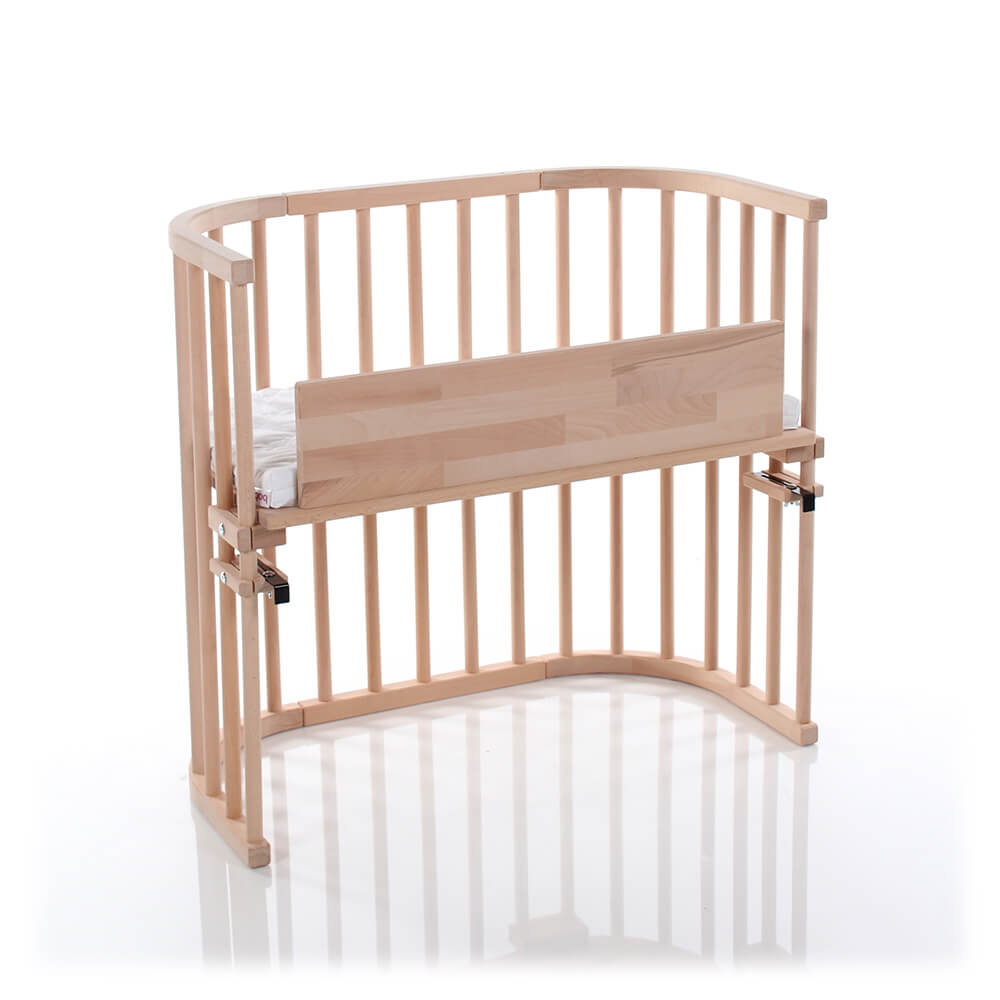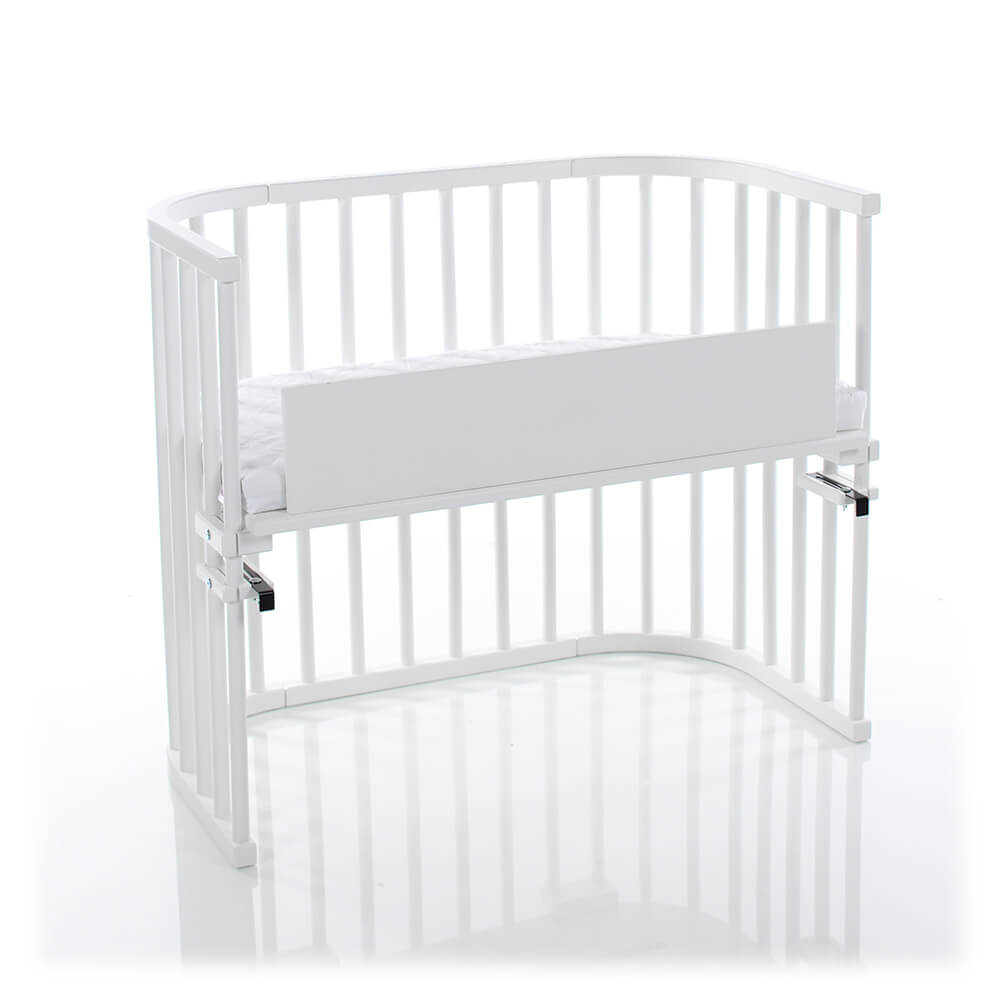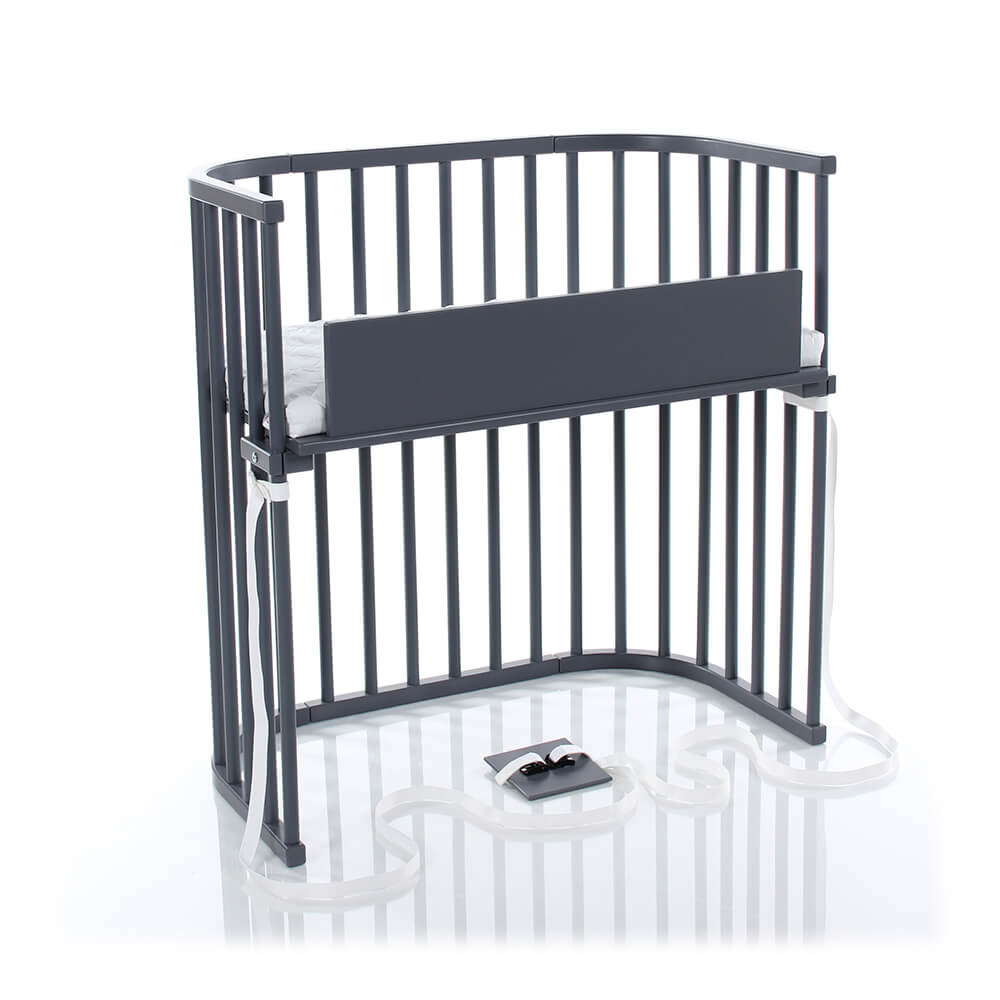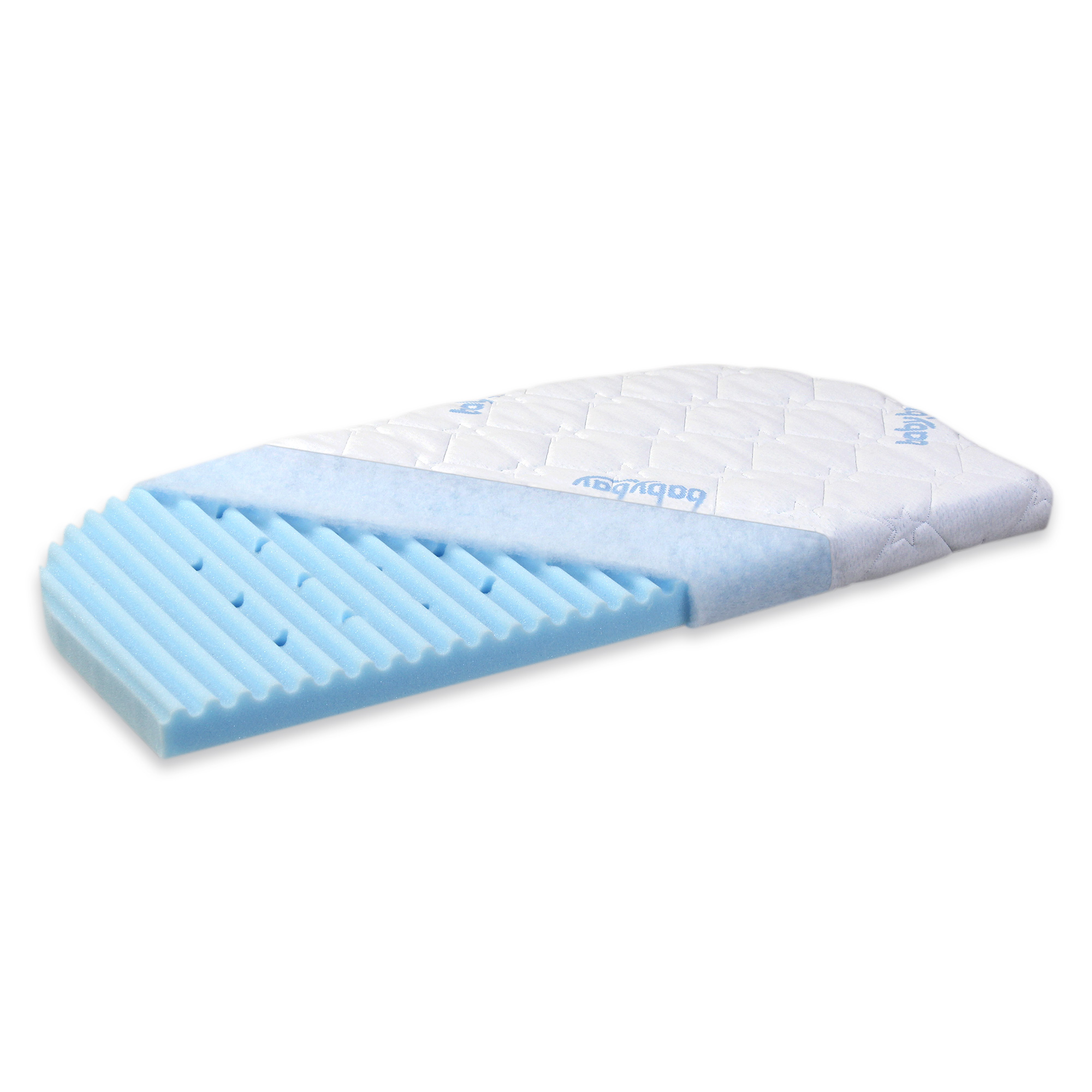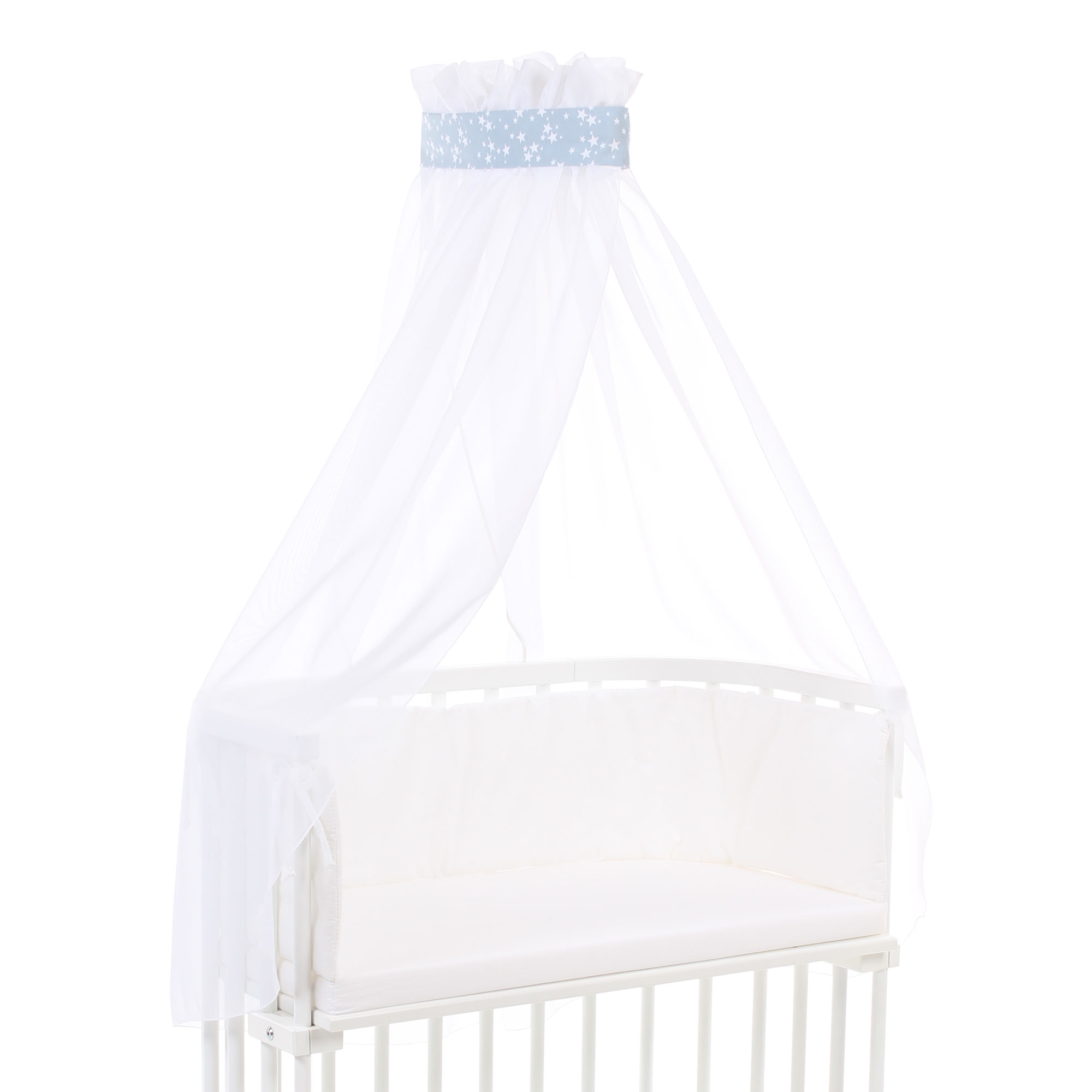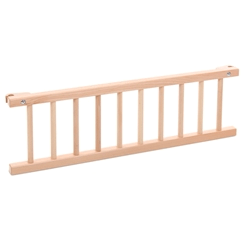As soon as parents begin to consider co-sleeping as the sleep practice that will best support their family’s peaceful and restful sleep, there’s one question that always seems to come up: what age is co-sleeping safe for my baby?
To answer this question fully (and give your family all the tools you need to get full nights of stress-free sleep), there are a few important things to cover, ones like:
-
- How co-sleeping is different from room sharing or bed sharing (and why that difference matters)
- What tools are available to help support your co-sleeping journey…and how parents use them to help their baby get more sleep (while getting more sleep themselves)
- How your baby’s sleep set-up might change at the 5 or 6 month mark (and why this change is an exciting sign of healthy growth)
- What co-sleeping might look like past the 1-year mark (and how to safely sleep as your little one grows older)
We’re going to break it all down so that you can skip straight past the struggle of “trying to figure it all out” and get to the part where you’re getting more restful nights of sleep. While also helping your little one soak in all the co-sleeping benefits each night.
What Is Co-Sleeping and Why Does “What It Is” Matter So Much?
As soon as baby is born, most parents invite their newborn into their bedroom to sleep nearby for a form of co-sleeping called “room sharing.”
Experts from the American Academy of Pediatrics agree that room sharing is the safest method of caring for your newborn during the first 6 months of their life (and ideally the first year).
Unlike with some other forms of co-sleeping that involve inviting your baby into your bed to share a mattress, room sharing describes the practice of sleeping close to your baby while still giving them a sleep space all their own. One expertly-engineered to support their comfort and safety. 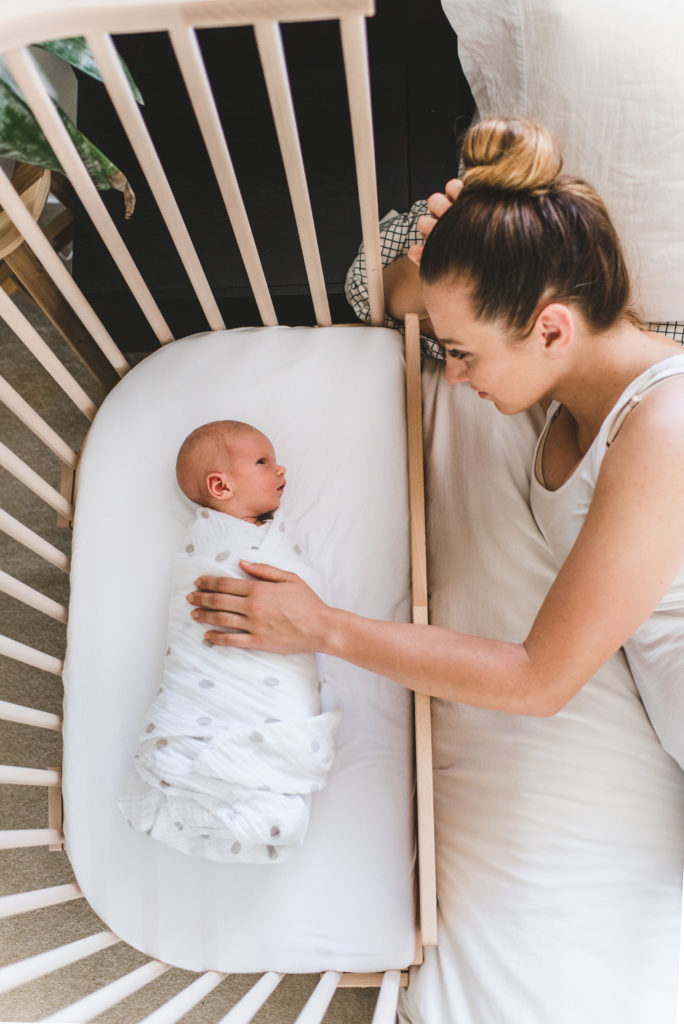
Choosing to sleep near your baby — while still giving them a space to rest that’s designed for them — lets you experience all the bonding and better rest-giving benefits of traditional forms of co-sleeping/ While also reducing the risk of SIDS by as much as 50%.
How Co-Sleeping Tools Give You the Best of Both Sleeping Worlds
If you think that “room sharing” means giving up on your co-sleeping dreams and simply popping a crib in your shared sleep space…think again.
Co-sleeping tools like bedside sleepers have made it possible to get the sleep closeness you want at night, without having to worry about the safety of sharing a bed with your little one.
You won’t have to reach over bars…leave your bed…or walk across the room to put a loving hand on your baby’s back. And you won’t have to choose between soaking up co-sleeping benefits or keeping your little one in a crib.
By taking advantage of the sleep innovation that has come in the last few years from co-sleeping tools, caring for your little one is as easy as reaching over from where you’re comfortably cuddled in the sheets yourself.
How Bedside Co-Sleepers Get Involved in the Safe Sleep Conversation
Bedside co-sleepers are expertly-designed to offer you and baby a safe co-sleeping solution to maximize rest time, emotional bonding, and healthy development during the oh-so-important first months of their life.
They do this by giving your little one a firm, stable surface away from the plush and not-baby-friendly softness of your own mattress and blankets — while keeping them within arm’s reach of you all through the night.
There are several reasons why room sharing and separate surface co-sleeping take top prize when it comes to co-sleeping with your newborn during their first few months, ones that remain fully focused on safety and comfort:
Reason #1: It makes it easier to adjust to your baby’s sleep patterns (which makes sleep easier for you both)
When your baby is first born, they aren’t quite oriented to the differences between day and night. This is a truth that easily wreaks havoc on their (and your!) sleep schedule.
Until your baby develops their circadian rhythm — the 24-hour clock within all of us that regulates our patterns of sleepiness and alertness — your baby will have a hard time sleeping for more than a few hours at a time. 
Being able to care for their every need (whether that means putting a comforting hand on them during a crisis call or helping them with nighttime feeding them when the times comes) without even leaving your bed can make it easier for you to give care without interrupting your own sleep.
Which means you can get more rest each night, while feeling less grogginess when you wake up in the morning.
Reason #2: It makes nighttime nursing easier.
When babies are first born, they have very tiny tummies. Combine that tiny tummy with all the energy they’re expending growing big and strong and you have the perfect recipe for needing to frequently feed.
Though every baby is different, your baby might call out for feeding every 2-4 hours. And while this might feel like a lot to keep up with during the day, it can feel even more challenging at night.

Choosing separate surface co-sleeping during your baby’s first days, weeks, and months (by choosing to use a bedside co-sleeper) can help you catch some much-needed extra shut-eye while quickly responding to baby’s every nursing need.
You’ll be able to provide them with milk that will help them grow big and strong without even getting out of bed. Which ends up being a win-win for them and you — because you’ll be keeping them happy and healthy while getting extra hours of sleep yourself.
Reason #3: Separate surface co-sleeping uniquely supports mommas post c-section.
Getting sleep after a c-section can be a challenge for some moms.
Just because c-sections are one of the most common ways to deliver a baby today (with c-sections accounting for 1 in 3 births in the US), that doesn’t mean they aren’t major surgery. 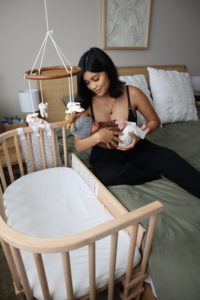
Moms need to rest after a c-section. And luckily, safe co-sleeping is one of the best ways for them to support their baby with nighttime feeding while still caring for their body by limiting how much movement they need to do.
Instead of reaching over crib bars or having to roll over and walk to another room in the house, bedside co-sleepers and other safe co-sleeping tools help mothers care for their little one right where they are — while supporting the needs of their still-healing body.
This makes them a no-brainer for many families who are getting back into the swing of things post c-section, and a no-brainer for many moms who find that the crib they purchased (with high bars they have to reach over multiple times a night) just isn’t a comfy enough solution as they heal.
How to Safely Co-Sleep with a 6-Month Old
Throughout Europe, models of bedside co-sleepers are endorsed for and regularly enjoyed by parents and baby up through one year of age. That means parents can support their little one with worry-free co-sleeping throughout all the early stages of their baby’s life. 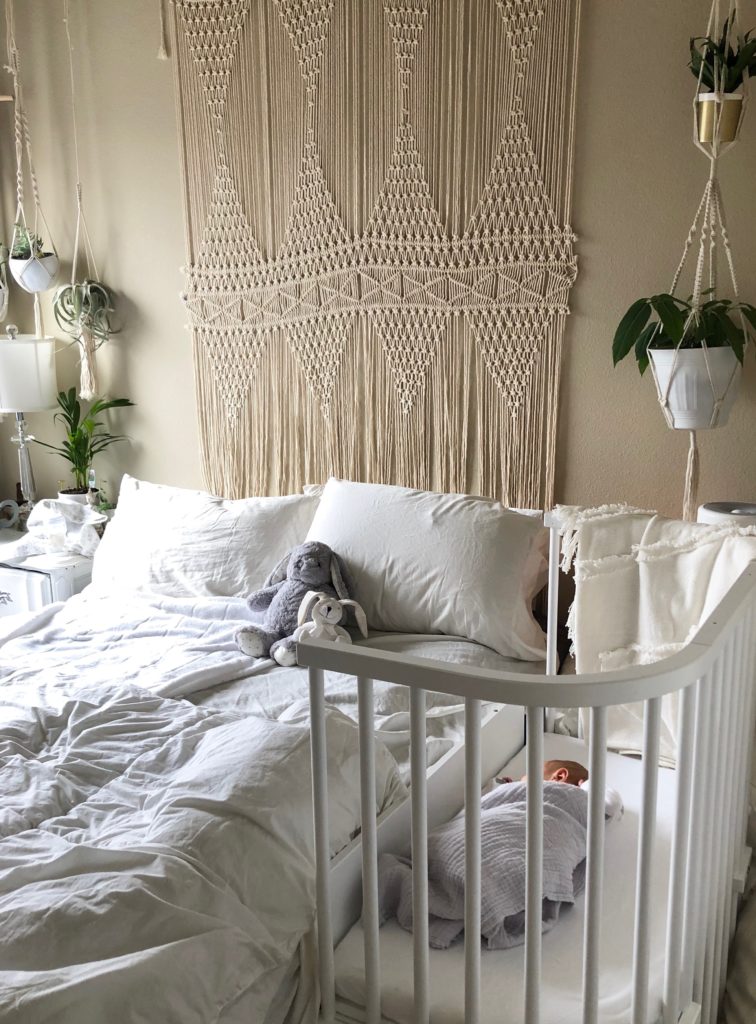
(In fact, some pretty cool people like Mila Kunis, Ashton Kutcher, and German pro soccer player Sebastian Jung have been known to sleep with a babybay by their bedside during these important first months.)
Though the US only tests co-sleepers up through 5 months, the American Academy of Pediatrics recommends continuing to room share with your baby through at least the 6-month mark.
For parents who want to continue to reap the emotional-bonding and healthy-growth benefits of co-sleeping past that 5-6 month mark, this might be a good time to convert your safe co-sleeper into a bedside bassinet that stays right by your bedside.
A bedside bassinet will take all the guesswork out of how to safely co-sleep with a 6-month old, while still giving them new room to grow their independence in a sleep space all their own.
How to Safely Co-Sleep with a 9-Month Old
By 9 months, your baby will be becoming increasingly independent. No longer content to simply lay on their back all through the night, they’ll likely feel the urge to move and crawl around during any break from sleep.
As your baby continues to explore their own mobility, your co-sleeping environment may need to be adapted to support their needs.
Though by now your baby is full of the adventurous spirit and can-do attitude they need to turn your mattress into a fun-filled playground, it’s better to save that kind of exploring for when you’re awake and watching.
The truth is, your baby might still be too young to be fully supported by the softness of your comfy-as-can-be mattress, blankets, and pillows. The wrong roll, twist, or turn during the night can leave baby struck with no clue how to get themselves out.
To keep baby safe, make sure that you move them to a space of their own by converting your safe co-sleeper into a bedside bassinet or standalone crib as soon as baby starts being filled with that must-move, must-dance, must-explore spirit.
The “How To” and Benefits of Co-Sleeping with a 1-Year-Old
As Dr. James J. McKenna — founder and director of the Mother-Baby Behavioral Sleep Laboratory at the University of Notre Dame — discovered, co-sleeping supports babies by helping them breathe more regularly, maintain a consistent body temperature, use energy more efficiently to grow strong, and experience less stress. 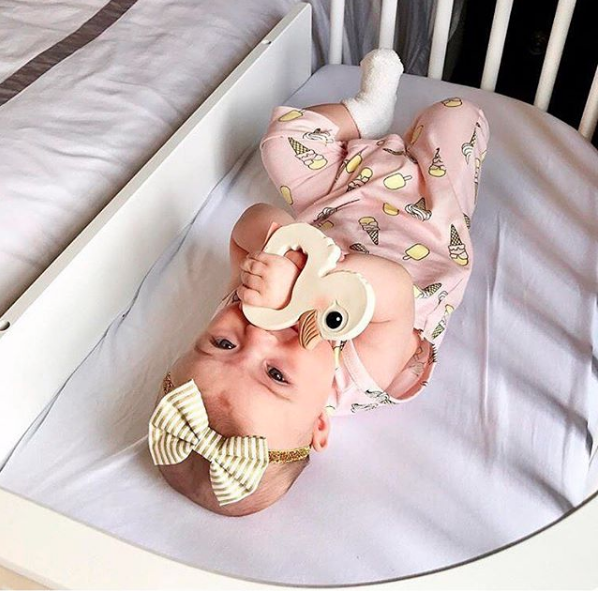
Though these remain some key benefits of co-sleeping with a 1-year old, it’s also important to remember that every child is unique. The safety of different sleep set-ups will largely depend on your child’s developmental stages and how they line up with your needs as parents.
Between one to two years of age, your child will grow from a tiny bundle of joy into a free-moving and free-exploring adventurer who doesn’t just know how to get themselves into some fun-filled situations…but how to get out of them safely as well.
By this time, your child should be able to naturally be able to move out of, roll over, and free themselves from any kind of restraining blanket, pillow, or comfy comforter that comes their way. Which might give you reason to adjust your sleep set-up to suit.
The Big Takeaway When It Comes to Safe Co-Sleeping for Your Baby
Certain sleep tools like the babybay co-sleeper bassinet are expertly-designed to safely support your baby through their first several months of life (and take all the second-guessing out of answering the question: What age is co-sleeping safe?). But you’ll ultimately have to use your own judgement when deciding when your baby is ready to leave their co-sleeper and crib behind to try out a different sleep set-up.
(Because just like in everything when it comes to parenting, the only one who truly can decide what works best for your family is you.)
But until the day coms when it’s time to transition your baby to a crib, you can be confident that c0-sleeping is giving your child the emotional and physical support they need to grow independent and strong. Supported by a sleep practice that has been nurturing babies like yours for thousands of years.

